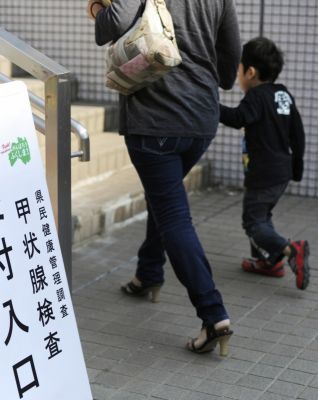
Local doctors also began a long-term survey of children for thyroid abnormalities, a problem associated with radiation exposure. Officials hope to test some 360,000 people who were under the age of 18 when the nuclear crisis began in March, and then provide follow-ups throughout their lifetimes.
The 12-member IAEA group was to visit farms, schools and government offices throughout Fukushima prefecture in northeastern Japan to observe the cleanup process. It is the U.N. atomic agency's second major mission to Japan since the crisis at Fukushima's Dai-ichi nuclear power plant began.
Nearly 20,000 people were killed when the earthquake and tsunami hit Japan on March 11, and the disaster severely damaged the Fukushima complex. Officials say the plant is now relatively stable, but tens of thousands of people still cannot -- or choose not to -- return to their homes because of the radioactive contamination.
No one has died from radiation in the nuclear crisis, but concerns remain high over how the lingering contamination will impact the safety of Fukushima's children.
The thyroid testing program is intended to allay those fears and build a database that might help deal with future disasters. On its opening day Sunday, more than 100 children, whose thyroid glands are more susceptible to radioactive iodine than adults, were checked.
The results were not made public, but officials have said that if any abnormalities are discovered, the children -- to be tested every two years until age 20, and then every five years after that -- will be provided with further care.
More than 6,000 cases of thyroid cancer have been detected in people who were children or adolescents when exposed to high levels of radioactive fallout in the period immediately after the 1986 Chernobyl disaster.
A 12-mile (20-kilometer) no-go zone remains in effect around the Fukushima nuclear plant. Japan recently lifted other advisories that warned residents just outside of that zone to be prepared to evacuate at any time, a move largely aimed at reassuring evacuees that it is safe to return.
To further bring down contamination levels, towns outside of the no-go zone have begun washing down public areas and removing the top soil in parks and schoolyards.
The task is a daunting one because the nuclear accident spread radiation unevenly over a broad swath of Fukushima, leaving some areas near the plant relatively safe, while creating dangerous hotspots farther away.
Japan's government has acknowledged that the effort could take years. According to a report Sunday in the Asahi, a major newspaper, officials are aiming to complete the decontamination outside of the exclusion zone by the end of March 2014.



Reader Comments
to our Newsletter